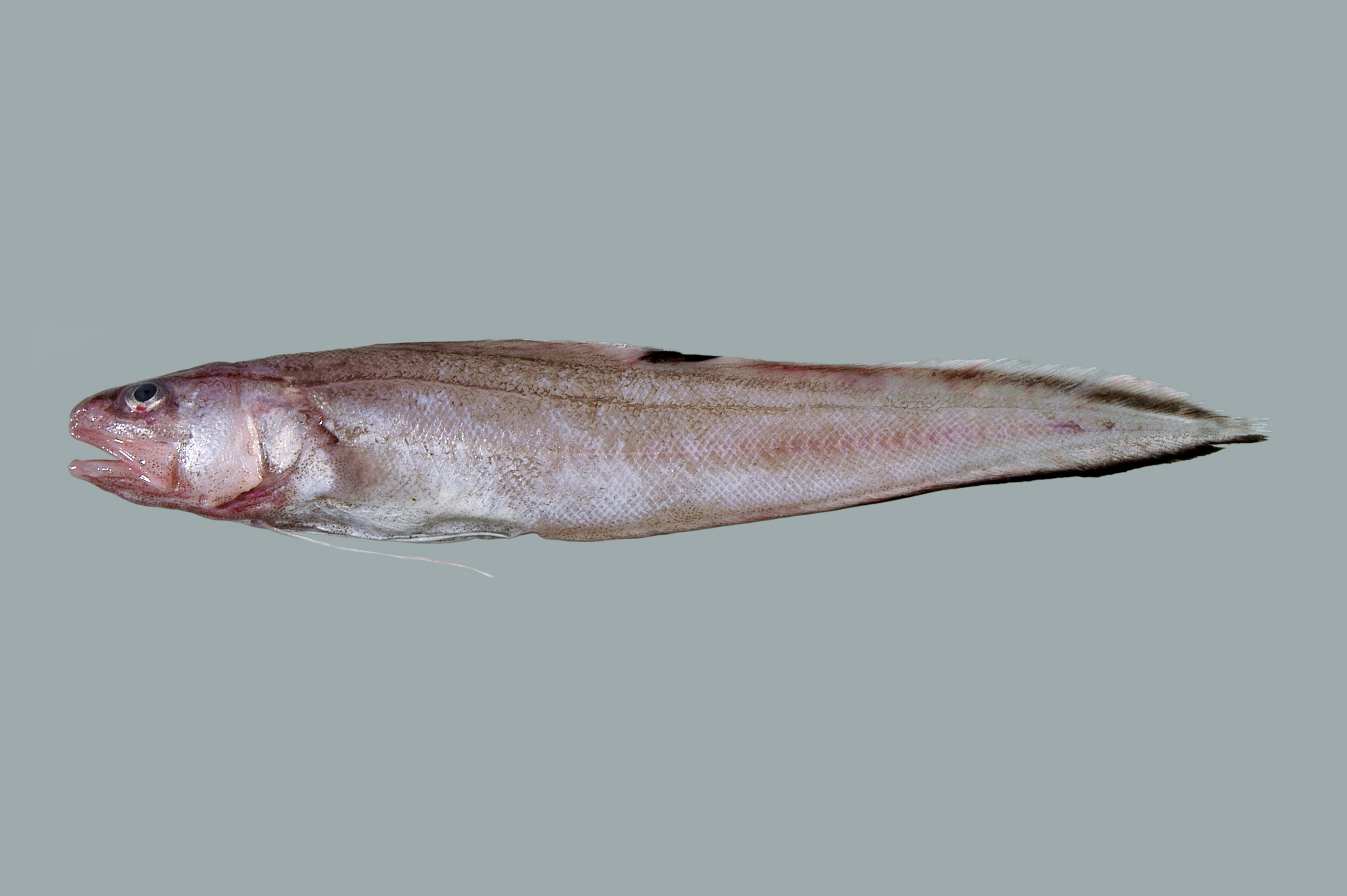Longray Cusk, Neobythites longipes Smith & Radcliffe 1913

Longray Cusk,Neobythites longipes. Source: Australian National Fish Collection, CSIRO. License: CC by Attribution-NonCommercial-ShareAlike
Summary:
A cuskeel with a large ocellus on the dorsal fin behind a vertical through the anus, darks margins on the posterior third of the dorsal fin and the posterior two thirds of the anal fin, and long pelvic-fin rays reaching beyond the anus.
Cite this page as:
Bray, D.J. 2022, Neobythites longipes in Fishes of Australia, accessed 19 Apr 2024, https://fishesofaustralia.net.au/Home/species/4585
Longray Cusk, Neobythites longipes Smith & Radcliffe 1913
More Info
|
Distribution |
North of Glomar Shoals, north-western Western Australia, to off Cartier Reef in the Timor Sea. Elsewhere the species occurs in the tropical, east-Indo-west Pacific: off Indonesia, the Philippines and southwestern Taiwan. The species is benthopelagic on the outer continental shelf and upper slope. |
|
Features |
Dorsal fin 96-103; Anal fin 72-76; Caudal fin 8; Pectoral fin 27-30; Pelvic fin 2; Gill rakers (long rakers) on anterior gill arch 8-10; Pseudobranchial filaments 5-10; Vertebrae 57-60, precaudal vertebrae 13-14. Head length 22.5–25.5 % SL; pelvic-fin length 28.5–54 % SL, pelvic fins reaching well beyond anus; spines absent from rear margin of preopercle. |
|
Etymology |
The specific name longipes is from the Latin longus (= far, long) and pes (= foot) in reference to the elongate pelvic fins, with the inner ray being more that twice the head length. |
|
Species Citation |
Neobythites longipes Smith & Radcliffe, in Radcliffe 1913, Proceedings of the United States National Museum 44(1948): 139, pl. 7(1). Type locality: Off Jolo Island, 6°02'00"N, 120°44'40"E, Philippines, Albatross station 5550, depth 258 fathoms. |
|
Author |
Bray, D.J. 2022 |
|
Resources |
Longray Cusk, Neobythites longipes Smith & Radcliffe 1913
References
Gloerfelt-Tarp, T. & Kailola, P.J. 1984. Trawled Fishes of Southern Indonesia and Northwest Australia. Jakarta : Dir. Gen. Fish. (Indonesia), German Tech. Coop., Aust. Dev. Ass. Bur. 406 pp.
Heba A., Mok, H.K. & Fine, M.L. 2016. Development and sexual dimorphism of the sonic system in deep sea neobythitine fishes: The upper continental slope. Deep Sea Research Part I: Oceanographic Research Papers 115: 293-308, https://doi.org/10.1016/j.dsr.2016.07.010
Nielsen. J.G. 1999. Families Carapidae, Ophidiidae, Bythitidae, Aphionidae. pp. 1978-1985 in Carpenter, K.E. & Niem, V.H. (eds). The Living Marine Resources of the Western Central Pacific. FAO Species Identification Guide for Fisheries Purposes. Rome : FAO Vol. 3 pp. 1397-2068. (as Neobythites longiceps)
Nielsen, J.G. 2002. Revision of the Indo-Pacific species of Neobythites (Teleostei, Ophidiidae), with 15 new species. Galathea Report 19: 5-104 91 figs
Nielsen, J.G., Cohen, D.M., Markle, D.F. & Robins, C.R. 1999. Ophidiiform Fishes of the World. An annotated and illustrated catalogue of pearlfishes, cusk-eels, brotulas and other ophidiiform species known to date. FAO Fisheries Synopsis No. 125 Vol. 18. 178 pp.
Smith, H.M. & Radcliffe, L. in Radcliffe, L. 1913. Descriptions of seven new genera and thirty-one new species of fishes of the families Brotulidae and Carapidae from the Philippine Islands and the Dutch East Indies. Proceedings of the United States National Museum 44(1948): 135-176 pls 7-17 https://doi.org/10.5479/si.00963801.44-1948.135 & See ref at BHL
Uiblein, F., Everett, B., Matiku, P. & Sithole, Y. 2020. Neobythites longipes. The IUCN Red List of Threatened Species 2020: e.T141357925A141807338. https://dx.doi.org/10.2305/IUCN.UK.2020-1.RLTS.T141357925A141807338.en. Accessed on 12 August 2022.
Uiblein, F. & Nielsen, J.G. 2018. Review of the steatiticus-species group of the cuskeel genus Neobythites (Ophidiidae) from the Indo-Pacific, with description of two new species. Zootaxa 4387(1): 157-173. https://doi.org/10.11646/zootaxa.4387.1.7
Yeh, H.-M., Lee, M.-Y. & Shao, K.-T. 2006. Neobythites longipes Smith and Radcliffe, 1913, a Taiwanese new record of ophidiid fish (Pisces: Ophidiidae).. Journal of the Fisheries Society of Taiwan 33: 357-364.

